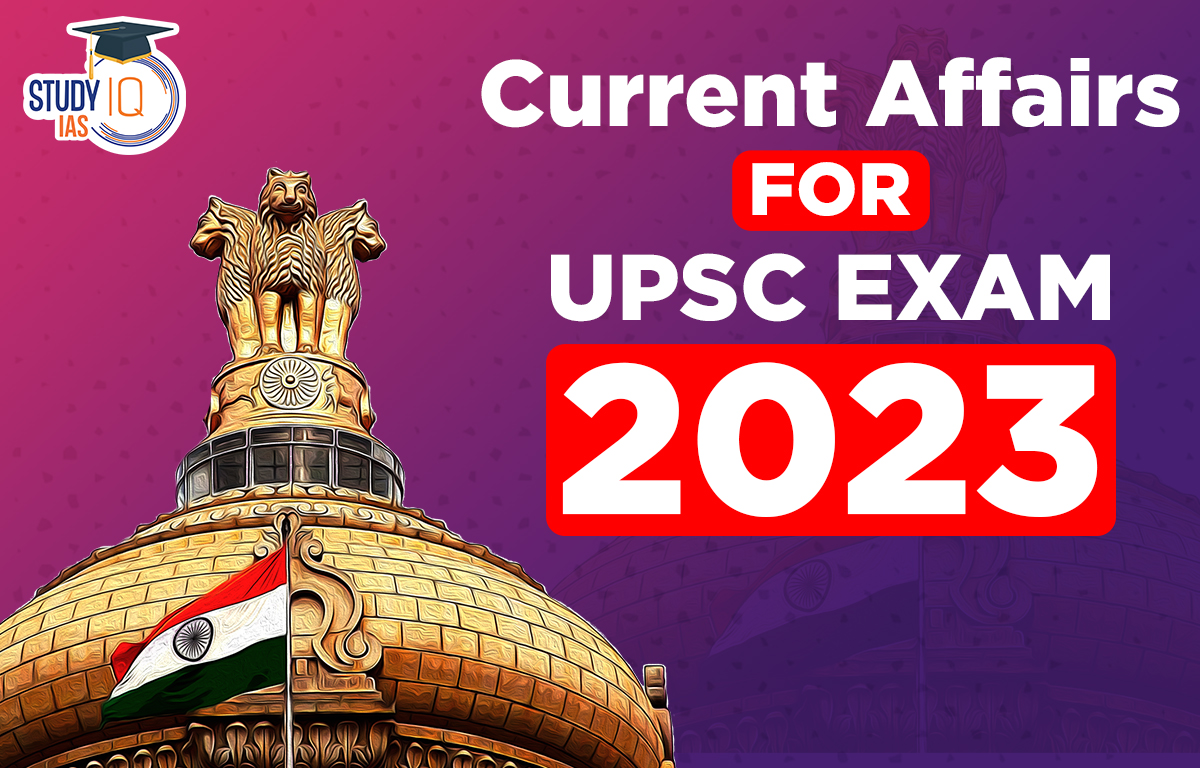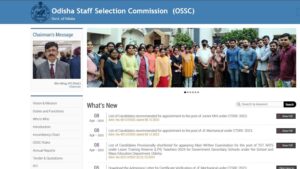Current Affairs 11th April 2023 for UPSC Prelims Exam
State Energy Efficiency Index 2021-22
Context: Union Minister of Power and New & Renewable Energy released the report of State Energy Efficiency Index (SEEI) 2021-22.
About the State Energy Efficiency Index 2021-22
- The index was developed by the Bureau of Energy Efficiency (BEE), in association with Alliance for an Energy-Efficient Economy (AEEE).
- The index assesses, the annual progress of states and UTs in energy efficiency implementation, for FY 2020-21 and 2021-22.
- The index is designed to help track progress on state goals for energy savings and reduction in emission intensity.
- SEEI 2021-22 has an updated framework of 50 indicators aligned with national priorities.
Performance by States
- In SEEI 2021-22, 5 states – Andhra Pradesh, Karnataka, Kerala, Rajasthan and Telangana – are in the Front Runner category (>60 points) while 4 states – Assam, Haryana, Maharashtra, and Punjab – are in the Achiever category (50-60 points).
- Further, Karnataka, Andhra Pradesh, Assam and Chandigarh are the top-performing states in their respective state groups.
- Telangana and Andhra Pradesh showed the most improvement since the last index.
Recommendations by the Report
- The report outlines the following recommendations to help states drive change in energy efficiency which will contribute towards the fulfillment of SDGs and NDC:
- Enabling fiscal assistance for energy efficiency in the focus sectors.
- Developing institutional capacity in states and UTs to address emerging needs and challenges in energy efficiency implementation.
- Enhancing cross-functional collaborations across financial institutions, energy service companies, and energy professionals in large-scale energy efficiency implementation in states.
- Mainstreaming energy data reporting and monitoring across sectors.
About the Bureau of Energy Efficiency (BEE)
- The Government of India set up the BEE on 1st March 2002 under the provisions of the Energy Conservation Act, 2001.
- It works under the aegis of Ministry of Power.
- Primary objective: To reduce the energy intensity of the Indian economy.
- Mission: To assist in developing policies and strategies with a thrust on self-regulation and market principles, within the overall framework of the Energy Conservation Act, 2001.
- BEE coordinates with designated consumers, designated agencies and other organizations and recognize, identifies and utilize the existing resources and infrastructure, in performing the functions assigned to it.
Current Affairs 10th April 2023 for UPSC Prelims Exam
UN Democracy Fund (UNDEF)
Context: India is the fourth highest donor to UN Democracy Fund, which funds at least 68 projects worldwide linked to George Soros’s Open Society Foundation.
About the UN Democracy Fund (UNDEF)
- It is a United Nations General Trust Fund, with the primary purpose of supporting democratization around the world.
- It was established by the previous UN Secretary-General Kofi Annan in July 2005.
- As a secretary-General’s Trust Fund located within the UN Secretariat, UNDEF falls under the direct authority of the UN Secretary-General.
- The UNDEF funds projects that focus on a range of areas, including:
- Strengthening civil society organizations
- Promoting human rights and the rule of law
- Enhancing the participation of women and marginalized groups in democratic processes
- Fostering the development of democratic institutions and processes.
- UNDEF provides funding to civil society organizations, including non-governmental organizations, community-based organizations, and academic institutions.
- UNDEF subsists entirely on voluntary contributions from Governments.
- The Secretary-General’s Advisory Board, UNDEF’s main governing mechanism, is composed of 19 members including the United States, India, Japan, Qatar, Australia, Germany and France.
Project Elephant
Context: To commemorate the successful completion of 30 years of Project Elephant in 2022, the ministry has decided to organise Gaj Utsav 2023 at Kaziranga National Park.
About Project Elephant:
- Project Elephant was launched in 1992 as a Centrally sponsored scheme with an aim to protect elephants and improve its habitat and corridors, reduce human-elephant conflict and ensure their welfare.
- The Ministry of Environment, Forest and Climate Change provides financial and technical support to major elephant range states in the country through the project.
- Unlike Project Tiger, the Project Elephant looks at the welfare and health of captive elephants as well.
- 33 elephant reserves have been notified (Terai ER in Utter Pradesh became 33rd India’s ER); 101 elephant corridors identified.
- Objectives:
- To provide financial and technical support to wildlife management efforts by states for their free-ranging populations of wild Asian Elephants.
- The project aims to ensure the long-term survival of the population of elephants in their natural habitats by protecting them, their habitats and migration corridors.
- Other goals of Project Elephant are supporting the research of the ecology and management of elephants, creating awareness of conservation among local people, providing improved veterinary care for captive elephants.

Status of Elephants in India:
- India has about 27,000 Asian Elephants, which is the world’s largest population of the species.
- As per Elephant Census (2017), Karnataka has the highest number of elephants (6,049), followed by Assam (5,719) and Kerala (3,054)
- More than 60% of the world’s elephant population is in India.
- The elephant is the Natural Heritage Animal of India.
| Asian Elephants: | African Elephants: |
|
|
Threats: Escalation of poaching, Habitat loss, Human-elephant conflict, Mistreatment in captivity, Abuse due to elephant tourism, Rampant mining and Corridor destruction.
Gaj Utsav 2023
- The Gaj Utsav 2023 is a significant event in India that commemorates the 30th anniversary of Project Elephant, a flagship conservation initiative launched by the Indian government in 1992.
- The event aims to promote awareness about the conservation of elephants and their habitats, reduce human-elephant conflicts, and ensure the welfare of captive elephants.
- Through the Gaj Utsav 2023, the Indian government aims to work towards mitigating these challenges and ensuring a better future for elephants in India.
Kaziranga National Park
- The event is being celebrated at the Kaziranga National Park, which is known for its high population of Asian elephants.
- It was created in the year of 1904.
- It was declared a National Park in 1974.
- It was declared a tiger reserve in 2007.
- Kaziranga was declared a World Heritage Site by UNESCO for its unique natural environment in the year of 1985.
- The park has been identified as an Important Bird Area by the Birdlife International Society as it is home to various species of migrating and inhabitant birds.
- It is situated on the banks of the river Brahmaputra.
- It is majorly known for the ‘big four’ species— Rhino, Elephant, Royal Bengal tiger, and Asiatic water buffalo.
- The National Highway 37 passes through it.
- The Diphlu River runs through it.
- The landscape is marked by: Tropical moist mixed deciduous forests and tropical semi-evergreen forests, tall grasses, and short grasses.

Zojila Tunnel
Context: The Union Government is making efforts to open the Zojila tunnel for traffic ahead of its deadline set for 2026.
About Zojila Tunnel
- It involves construction of a 14.15 Km long tunnel at an altitude of about 3000 m under Zojila pass (presently motorable only for 6 months in a year) on NH-1 connecting Srinagar and Leh through Dras & Kargil.
- Zojila tunnel will be India’s longest road tunnel, and Asia’s longest bi-directional tunnel.
- Benefits:
- This tunnel will allow all-weather connectivity between Ladakh and Srinagar, which is disrupted during the winter months.
-
- The 13.14-km tunnel will facilitate round-the-year transportation of goods to Ladakh and better movement of the armed forces in case of emergency.
- This Project will make the travel on Srinagar-Kargil-Leh Section of NH-1 free from avalanches.
- Project would enhance the safety of the travelers crossing Zozila Pass and would reduce the travel time from more than 3 hours to 15 minutes.
- Project will generate employment to the locals.
- The tunnel will actually change the life of the people, especially during the winters. Medicines, vegetables and other important items are flown through the air during winters, which makes them expensive.
- The construction of the Zojila Tunnel may bring about all-around economic and socio-cultural integration of these regions which remains cut off from the rest of the country during winters due to heavy snowfall for about six months.
-

Public Interest Immunity Claim
Context: The Supreme Court has devised a procedure for “public interest immunity claim” as an alternative to sealed covers for deciding claims involving state secrets.
About Public Interest Immunity Claim
- Public interest immunity claim is essentially a “standard of review” used by courts.
- Public interest immunity claims allows the State to remove the material from the proceedings on the ground that its disclosure would injure public interests.
- If the court allows this claim, then the concerned document cannot be used in evidence. Public interest immunity would make a document non-existent for the purposes of the proceedings.
- Even though public interest immunity claims violate the principles of natural justice, it is less restrictive compared to sealed cover procedure.
Sealed Cover Procedure
- It refers to a confidential document or information that is submitted to the court in a sealed envelope or cover. The submitted document is not made available to the parties involved in the case or the general public.
- The procedure has been criticized for going against the principles of transparency and fairness in the judicial process.
Difference with Sealed Cover Procedure
- In sealed cover procedure, the court allows the submitted document to be used in evidence in the case, without disclosing to the other side.
- But in public interest immunity claims, the court allows the removal of the material from the proceedings.
Ramakrishna Mission
Context: Prime Minister of India spoke at the 125th foundation day celebrations of Sri Ramakrishna Math at Chennai.
About Ramakrishna Mission
- Ramakrishna Mission is responsible for the worldwide spiritual movement known as the Ramakrishna Movement (Vedanta Movement).
- It was founded by Swami Vivekananda on 1 May 1897, the chief disciple of Swami Ramakrishna Paramahamsa, after whom it was named.
- Philosophy: The organization promotes the ideals of Hindu Philosophy known as Vedanta (Advaita Vedanta) and four yogic ideals (Jnana, Bhakti, Karma, and Raja yoga).
- Activities: The organization carries out religious teaching, apart from extensive educational and philanthropic work, both in India and abroad.
- Vedanta:
- The term Vedanta means conclusion in Sanskrit. It is one of the six systems (darshans) of Indian philosophy.
- The term is used to refer to the Upanishads, which were elaborations of the Vedas, and to the school that arose out of the study (mimamsa) of the Upanishads.
Swami Vivekananda
- Swami Vivekananda was born as Narendra Nath Dutta on 12th January 1863 in Calcutta.
- He embraced monkhood after getting influenced by the teachings of Swami Ramakrishna Paramahamsa.
- Swamiji attended the Parliament of Religions in Chicago in 1893, where his speech to the assembly was well received.
- Contribution:
- Swamiji is believed to be a key figure in introducing Vedanta and Yoga to the Western world, and is credited with raising interfaith awareness, and bringing Hinduism to the status of a major world religion.
- Literature: Jnana Yoga, Karma Yoga, Bhakti Yoga, Raja Yoga. He brought out periodical Brahmavadin to teach the Vedanta.


 Daily Quiz 18 April 2025
Daily Quiz 18 April 2025
 OSSC CGL Syllabus 2025 and Exam Pattern ...
OSSC CGL Syllabus 2025 and Exam Pattern ...
 AI and its Regulation in India, Limitati...
AI and its Regulation in India, Limitati...





















